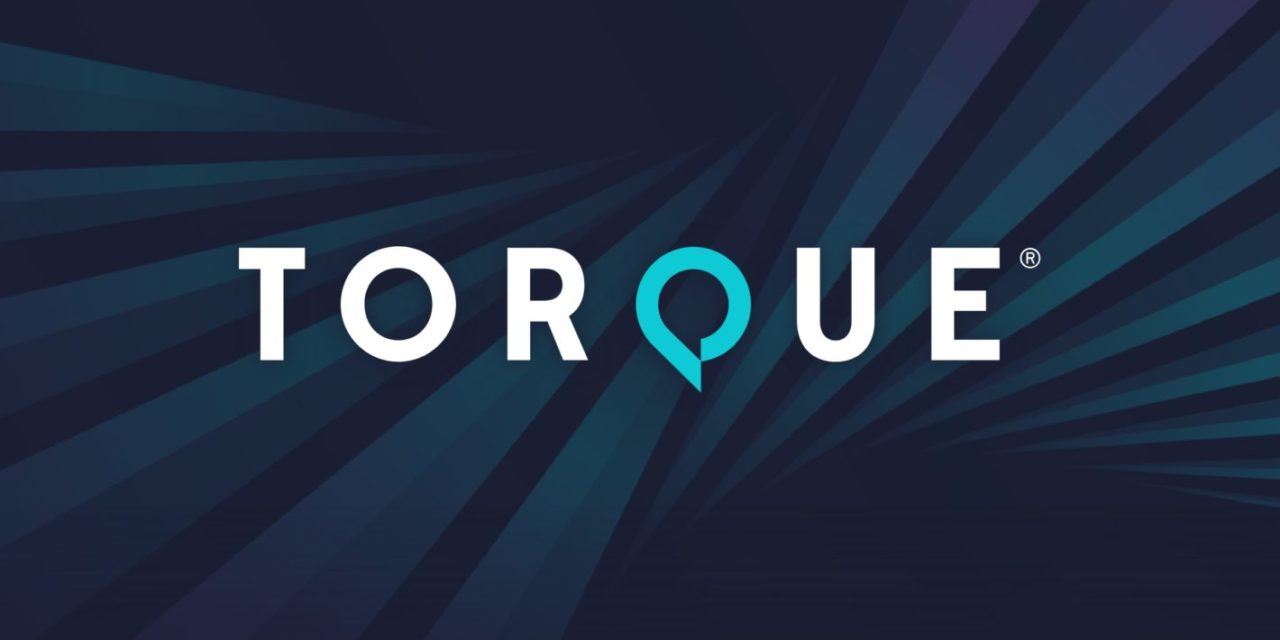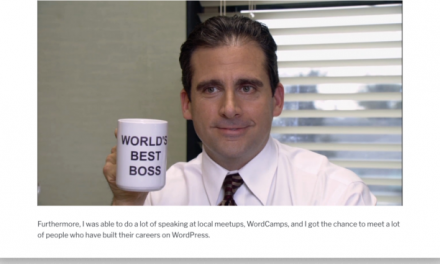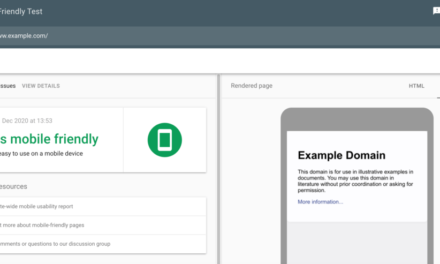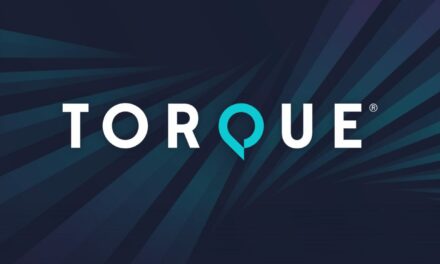Welcome to Press This, the WordPress community podcast from WMR. Here host David Vogelpohl sits down with guests from around the community to talk about the biggest issues facing WordPress developers. The following is a transcription of the original recording.
Powered by RedCircle
David Vogelpohl: Hello everyone and welcome to Press This the WordPress community podcasts on WMR. This is your host, David Vogelpohl, I support the WordPress community through my role at WP Engine, and I love to bring the best of the community to you hear every week on press this as a reminder, you can find me on Twitter @wpdavidv, or you can subscribe to press this on iTunes, iHeartRadio, Spotify, or download the latest episodes at wmr.fm. In this episode we’re gonna be talking about something that’s always been a curiosity of mine and something I’ve been able to support here and there over the years. But that is paid subscription strategies for media sites, particularly traditional media sites like newspapers and magazines. And joining us for that conversation. I’d like to welcome to press this and Endo Creative Mr. Jeremy green. Jeremy, welcome.
Jeremy Green: Thanks for having me.
DV: Really glad to have you here. And for those listening what Jeremy is going to talk about are his thoughts on why WordPress is a great choice for content publishers seeking to monetize with digital subscriptions. His favorite techniques for subscriptions with media sites that he endo creative sports and what he’s planning next are planning to test next. When optimizing for paid subscriptions. I think it’s a really cool topic to focus on this episode. Really glad to have you here, Jeremy.
JG: Yeah, it’s good to be here.
DV: Excellent. Well, let me ask you the first question I asked every guest Could you briefly tell me your WordPress origin story? When was the first time you used WordPress?
JG: Yeah, so I started using WordPress about 12 years ago, got started writing kind of a personal blog and then about 11 years ago decided to start kind of becoming a freelance web designer web developer and was in Seattle at the time and went to the Seattle WordPress meetup. met some great people and kind of got hooked from there and doing it ever since.
DV: So was the Seattle meetup your first exposure to it? Or did you say you had exposure prior to that?
JG: I mean, I knew what WordPress was just from, you know, personal blogging, and such. But as far as the community goes, the Seattle WordPress meetup was my first exposure to anyone else who used WordPress.
DV: Yeah, I had a similar experience at the WordCamp Austin. I was like, Whoa, there’s like a thing here. Just software 2012 years ago, it’d be 2010. So this would have been right around the time of custom post types then in WordPress, and that kind of do that hit you or did you realize that was a thing when you first started or I guess you probably started and just thought it was maybe always a big I don’t know. What did you think at the time?
JG: Yeah. So it was always by the time I’d gotten into it. That was that was already a part of course. So I didn’t wasn’t around before that, when it was just posted pages. So it’s kind of like people getting started now.
DV: They’re like, What do you mean Gutenberg mean, the thing that you edit web pages, right? Yes.
JG: Classic editor editor means nothing.
DV: Yeah, exactly. I love it. Um, okay. So tell me a little bit then about endo creative, what you do there and some of the work y’all do for media publisher companies?
JG: Yes. So we’ve been building custom WordPress sites and plugins since 2010. And over the years, it’s been just me. I’ve also had other developers working for me, both part and full time. Currently, it’s just back to me. And we’ve worked on anything, small business websites, you know, locally here in Fort Collins, Colorado, to news and magazine publisher sites all over the world. So pretty, pretty broad mix of sites that we’ve built in plugins we developed
DV: Did you like happen into the media and publishing side? It sounds like you’re doing a variety of work, but just like a niche that developed or how did you get into it?
JG: It was yeah, it was a pretty organic process. I definitely wasn’t looking to get into it. It just kind of happened. Started working with a couple of WordPress plugins that were pretty specific to the news and magazine industry. Yeah, those would be issue and leaky paywall and started using those to build sites out and just kind of, you know, fell into it. And it was definitely an underserved niche and just really enjoy working with them. And so it’s been, you know, learning over gosh, probably just focusing specifically on publisher sites, probably the last five years or so.
DV: So if you’re a publisher out there, and you’re thinking about your kind of content management system of choice, what do you think the advantages are for WordPress for those types of companies that are specifically seeking to optimize with paid subscriptions, like do you think is there’s an advantage in WordPress in that way?
JG: I do. Yeah. So there’s a few things. Number one, it’s easy for your authors to publish and to create content. So the WordPress admin, in my experience has been really easy to use, and are easy to customize, you know, whether that’s through custom fields, custom functionality, it’s just really flexible. So that’s one thing that I really like about WordPress is basically if a client asks if we can do something, the answer is almost always yes. Because we can kind of customize WordPress to do what we needed to do. And one thing we’ve definitely found is every single publisher has a different set of requirements. As much as we tried to standardize things everyone’s you know, coming from a different situation, a different homegrown system. And so the ability to be flexible and be able to make it do exactly what they need to do. Integrate with you know, whatever their fulfillment center is and API integrations. There’s no kind of the open source. No Limits flexibility is really important to the publishers that I work with.
DV: Yeah, that really rings true reminds me of a of a presentation I did with a very major media company who I won’t name that was considering a CMS. And I remember they had an RFP for the CMS and they were like, you know, does WordPress do XY and Z? And the agency working with them was like, Yeah, does whatever you want, like what do you want it to do? And that was such a mind shift for that organization and they had like, 1/3 using WordPress 1/3, using like a TV station oriented one, and 1/3 using like a newspaper oriented one. And they had representatives from all the groups in this massive room and I said, Okay, who here knows how to use the newspaper one and a third race? Who here knows how to use the TV 1/3 Raise I said, Who here knows how to use WordPress every single hand in the room went up, and that really hit home with your kind of familiarity with the author’s part. A lot of this training has to go into that. So what do you think publishers typically do wrong in their digital subscription strategies like obviously with the dawn of the internet, and people have not necessarily been, you know, trained in that medium to pay for content on a regular basis? What do you think people are doing wrong in that today and the strategies and the sites?
JG: Yeah, for sure. So a couple things come to mind. Number one, in order to have a successful online subscriptions, you have to have original content that isn’t available somewhere else for free. If you can, if someone’s able to get content somewhere else for free, then they’re not going to pay you for it. So it’s important that you have your own voice. You know, we see a lot of this with like local newspapers, you know, they have a really, they’re in a really good position because no one else is going to be writing about the content that they’re writing about.
DV: But if they’re just like syndicating A B articles, not so much.
JG: Exactly. Yeah, exactly. Yeah, you got to have that original content. Another thing too, is asking for the subscription. You’d be surprised how many media publishers don’t ask for the subscription or they make it really hard to subscribe. You know, they don’t highlight it in the navigation. They don’t do any call outs any calls to action, asking people to subscribe or even giving the reason why awesome why someone should subscribe.
DV: Why do you think that is? I mean, certainly they want to drive subscriptions. Do you think they just try not seem too salesy are still evolving in their digital strategies?
JG: Yeah, I think they’re still learning. You know, it’s digital. You know, as you know, like I said, I’ve been doing this for 12 years. So to me, it’s, it feels old. But for a lot of these people, like we still have newspapers that we’ve started to work with recently that this is their very first time to have a website. So across the spectrum, people are in very different places. So I think it’s just a lot of, you know, education. So spend a lot of time trying to educate our clients as far as what works in digital, you know, do you think
DV: they may have had over relied on advertising and like, didn’t worry about the subscription part trying to make the ad side work?
JG: Yeah, I mean, I’m, I’m not a publisher myself, but it seems to be the case. Where they’re kinda like, oh, advertising revenues drying up. We need to start diversifying how we’re getting revenue.
DV: it seems like a lot of publishing businesses, particularly newspapers, it was like the subscription price was to cover the cost of printing but the money came from the advertising. And I could see where some might be in a position now to think that subscription side of the business is the primary driver, sure newspaper or magazines. Maybe this description has a much, much healthier side of that but it is interesting to think about businesses where you are I might have oh, yeah, well, first, we just do this, this or this, but isn’t maybe top of mind for them. I want to dig a little deeper though, into the strategies you’re using. We’re going to take our first break, we’ll be right back. Time to plug into a commercial break. Stay tuned for more pressing this in just a moment. Well, everyone welcome back to press this WordPress community podcast on W EMR. We’re in the middle of our episode, talking about the paid subscription strategies for media sites with Jeremy green. Jeremy right before the break you were talking a little bit about what you think publishers might be doing kind of quote wrong and driving this digital subscriptions. And you said, One, not producing original content to not include asking for the subscription putting in those meaningful CTAs Are there any other traps that you run across and the sites that you optimize?
JG: Yeah, I’d say another one is giving away too many articles. The majority of the sites we’ve worked with use a metered paywall approach. And so what we’re finding works really well is to give away one free article and then at that point, ask for the email address for like a free subscription and that gives them access to a couple more articles and then asking for the paid subscription. So I think people give away too much content, or they ask for the sale right away when they should be just asking for the email address.
DV: So you think like there you feel like most of them are doing things like article limits and they just set them too high or do you feel like most are not even using Article limit technology at all?
JG: When they come, you know when I when I start to work with them, usually they’re not using any kind of a wall system, any kind of subscription software. So yeah, I would say that, you know, adding it having something is the first step for sure.
DV: Okay. And I think like I’ve experienced that for like a large number of sites over the last month following like the Ukraine situation and there’s more and more of it where I’m like, this is a quality news or maybe I should go ahead and take the leap and pay. It is interesting, that kind of exchange of value even though I’m kind of trained in a way to spec to read things for free and not subscribe so in terms of like, implementing techniques that like are effective at helping people take that leap. You know, I guess one tip is to keep your article limits lower. The second he mentioned was asked for something on easier to get like an email address. subscription that way. What are some other techniques in your builds that you found helpful for publishers to achieve their subscription goals?
JG: Yeah, so you can, I would say offering don’t offer, you know, 20 different subscription options, try to pare them down. As much as possible. So one, maybe two options. You don’t want to give people too many choices, because then it’s hard for them to make that choice. So you want to steer them in the direction that you want them to go. And then also, you know, offering a trial can be a good way to get people to sign up. But don’t offer don’t don’t make the offer so low that it undervalues your content. So for example, if you know I’m going to give you $1 For three months access, then, you know especially for digital content, it kind of puts makes it feel like there’s not a lot of value there. So I would say price your content, an appropriate amount so that people see the value that they’re going to get.
DV: So the idea there is that you’re framing the potentially framing the content to be worth less if you come in with to bow and offer for that trial period. Now, you mentioned limiting the subscription options. I’m imagining myself as a editor, the newspaper magazine and I’m thinking like okay, we want to make some, I don’t know new types of content, maybe we’re going to focus on the business for a while and it’s gonna maybe be a different subscription, like you experience that tug and pull with the publishers you work with is this notion of like we’re gonna create this whole new area of content and unless we need more subscriptions,
JG: yeah, I mean, they definitely you know, like to have as many subscription options is possible sometimes. But again, we’ve seen the best results with, you know, offering, whether it’s unlimited access, or two tiers of access, but the fewer options you can give someone than that, the more likely they are to convert
DV: interesting. Like I’m having like flashbacks to like the Business Journal and like, I don’t know that I’ve ever paid for a business journal subscription in my life. But in past roles, I definitely paid for like the business journals, book of lists. And so this has me thinking, publishers thinking all kinds of different ways to monetize your singing your experience, you know, giving people just a few choices, reducing that cognitive load tends to produce the best results.
JG: Yep, absolutely.
DV: So, in the WordPress sense, you know, I know there’s all kinds of different subscription technologies and plugins and approaches, but what are your go to methods for implementing things like paywalls or subscription options? Article limits those types of experiences?
JG: Yep. So for me personally, I mainly use leaky paywall full disclosure, I’m also one of the developers on it. And so I enjoy working with it. And I’ve used it to build tons of client sites. So what I kind of like to say is not only do I build it, but also dogfood it in the real world. But there’s, you know, tons of other great options out there. As well restrict content, pro paid memberships pro, you know, even WooCommerce subscriptions can be a really good option. So there’s lots of different ways to take subscriptions online through WordPress.
DV: So obviously, you presumably have the skills to write software you’re writing custom paywall? Yeah, you’re still kind of thinking about it through the lens of off the shelf software. Is that primarily for the kind of work flows speed benefits of not having to write everything from scratch? Are there other benefits you see to leveraging kind of off the shelf optic? options like leaky paywall?
JG: Yeah, I mean, they can get you, I would say 90% of the way there. And then that’s one of the beauties of WordPress is you know, with weathers to add ons or hooks and filters. You can pretty much make it do anything you need it to do connect to any you know, if you got some CRM software somewhere, you know, you can hook it up to anything you need to, but have an off the shelf plugins get you really far down the road really quickly and really easily.
DV: Yeah, that’s a good point. You were talking earlier about that notion of kind of customization and flexibility in terms of the software you’re creating, but also what you’re integrating it with. And so obviously, a lot of folks don’t leverage plugins quicker. But in the case of publishers, what are some are the customer some of the customizations and integrations that might be unique to that group? I can think of a few I’m just curious what come to your mind.
JG: Yeah, I mean, so I mean, right now, a lot of my time is spent building fulfillment center integrations, so with print, you know, you’ve got people who have the magazine, but then you need someone to make sure that gets shipped to the right people and make sure it’s you know, which warehouses is stored in customer support, all that kind of stuff. And so we’ve been building a lot of integrations with fulfillment centers, and their API is directly.
DV: Yeah, I can totally see that and it makes sense. And of course, each one’s going to be like almost completely different. And stitching that together and kind of more closed, proprietary, sassy way might be much more difficult. It probably have to create a lot of middleware anyways, even if he did that. Okay, that makes sense. So kind of shifting back to you know, this notion of free versus paid subscriptions. Are there any other key strategies that stick out to you as you think about your builds?
JG: Yeah, so I would always recommend if you have the right content to offer the free level, just because that’s a great way to grow your email list as a publisher, because a lot of times you know, and I’m sure you’ve experienced as well, you’re you read an article and you’re not ready to pay right away for some digital content. But as you get emails over time, you know, as new content comes out, and you go back to the site, and eventually you’re like, you know what, this is worth it. I’m reading this content a lot. And so it’s, you’re a lot more apt to to do a paid subscription. So I would definitely recommend having that free level
DV: as a publisher, you’re able to monetize his free subscriptions to through advertising
JG: exactly on that email list. Yeah, yeah. There’s so many different ways you can utilize that list for sure.
DV: Yeah, it’s kind of unique because you know, non publisher non advertising based businesses. They don’t get to necessarily monetize their, quote, free offers of content. And they’re waiting for that final transaction for whatever it is. But in the publishing business, it’s like that, quote, free subscription is actually revenue for you in some pretty meaningful ways, even if they never take that lead. So it sounds like there’s kind of a balance there between, you know, the monetizing your advertising versus subscriptions. Is that fair?
JG: Yeah. Yeah. And I would say even to like even if you’re like a nonprofit publication, what we’ve seen is you know, people asking for that free email signup in order to read the content and then offering a donation level for access as well. And so, you know, even if you can’t take you know, quote, unquote payments Havering the free and then the donation level has worked really well, too.
DV: That’s an interesting twist I hadn’t considered awesome why I have some more questions around the strategic side. I know a lot of folks out there are, you know, building and optimizing these kind of sites. We’re gonna take our last break, and we’ll be right back. Time to plug into a commercial break. Stay tuned for more press this in just a moment. Everyone welcome back to press this WordPress. Community podcasts on W EMR. This is your host David Vogel. Paul. I’m interviewing Jeremy green of endo creative about paid subscription strategies for media sites. Jeremy right before the break you were telling us a little bit about the kind of relationship between free and paid subscription strategies. I liked how you pointed out to, you know, drive some value there through the free side. And it was interesting to chat through some of the relationships between, quote, free subscriptions that you can monetize your advertising versus the kind of recurring paid subscriptions. It’s really kind of an interesting angle on that. So I’m just curious, like you’re, you know, kind of developed a niche here. You’re working with these publishers over times, and I’m sure you’re like keeping an eye on the future and thinking of new things to test. What’s next on your text test list. What do you what do you want to try next weekend?
JG: Yeah, so we’ve been digging a lot into the insights data, as far as like what what type of messaging on like the subscribe nag is converting that sort of thing. So getting into dynamic paywalls where you know, based on user activities or history, what category they’re on showing different things that might be a little bit more relevant to them. As far as subscribe, call outs, that sort of thing. Another thing personally, I’ve been really interested in is the whole kind of headless WordPress, and where that’s going and then how publishers could utilize that in their subscription strategy. Because speed is a big part of, you know, conversions. And I think there’s a good opportunity for publishers to use a headless WordPress environment. So I’m, I’m excited to see where that that leads in the near future.
DV: Okay, so on the subscribe, nag part coming I understand that you said you were looking to make that more customized, I think is what you said or personalized. Yeah. Personalized dynamic.
JG: Yeah. So depending on what part of the site you’re on, or you know, you’re the users past interaction with the site showing different messaging, that sort of thing.
DV: So a lot of brands and sounds like you’re using more like static journeys like I’m here, and therefore My nag is x kind of thing. Maybe different things on different lists, Newsletter Lists, things like that, but not dynamic based on their behavior.
JG: Right. Yeah. Trying to make it you know, more. You know, the kind of the buzzword is personalization, but just trying to personalize it as much to each visitor as possible.
DV: Now, headless is interesting, you know, obviously, that has made the primary effect from the publishers on the rendering side, which of course, he being a key benefit. Have you seen many publishers start to explore headless or is this something you think is coming to the publishing space?
JG: Yeah, so we have recently had a couple people, a couple of publishers reach out and say that they were looking into headless solutions with WordPress. And so that kind of put it on my radar and got me you know, kind of digging deeper into okay, how do we make subscriptions work for digital digital publishers through through headless WordPress? Because yeah, we have started to see interest in that.
DV: So for you kind of being a smaller team, adopting new technologies, like Java is decoupled JavaScript and WordPress is a lot easier than larger or do you think that the publishers that are asking about it have the talent to back up that kind of build or, you know. I’m just curious if you happen to have any, any insights into that because it’s sort of I think the most interesting parts of the headless like, your team has to change in some way. Either. They need to learn new stuff or its new team. Yeah. I’m just curious if that’s come up much.
JG: Yeah. I mean, a lot of publishers we work with have, you know, in house to dev teams and stuff like that. And so they definitely have, you know, people are, you know, as far as developers go, they’re excited about, you know, what’s new, being able to do cool new things. And then also as a publisher, like, the whole API’s that comes with doing the headless WordPress allows you to send your data, you know, to web and mobile web app, you know, any kind of print fulfillment thing that you might need, so it opens a lot of doors for publishers as well. So I’d say, you know, the publishers themselves, usually have that dev team who are excited about, you know, trying with the latest and greatest web technologies
DV: and with relatively static sites, they’re like prime candidates for at least a relatively simple decoupled headless WordPress. Yeah, exactly. I love it. I love it. Jeremy, this was super interesting. Thank you so much for joining us today.
JG: Yeah thanks for having me.
DV: If you’d like to learn more about what Jeremy is up to, you can visit endocreative.com. Thanks, everyone for listening to press this WordPress community podcast on WMR. This has been your host David Vogelpohl. I support the WordPress community through my role at WP Engine. And I love to bring the best of the community to you here every week on Press This.











